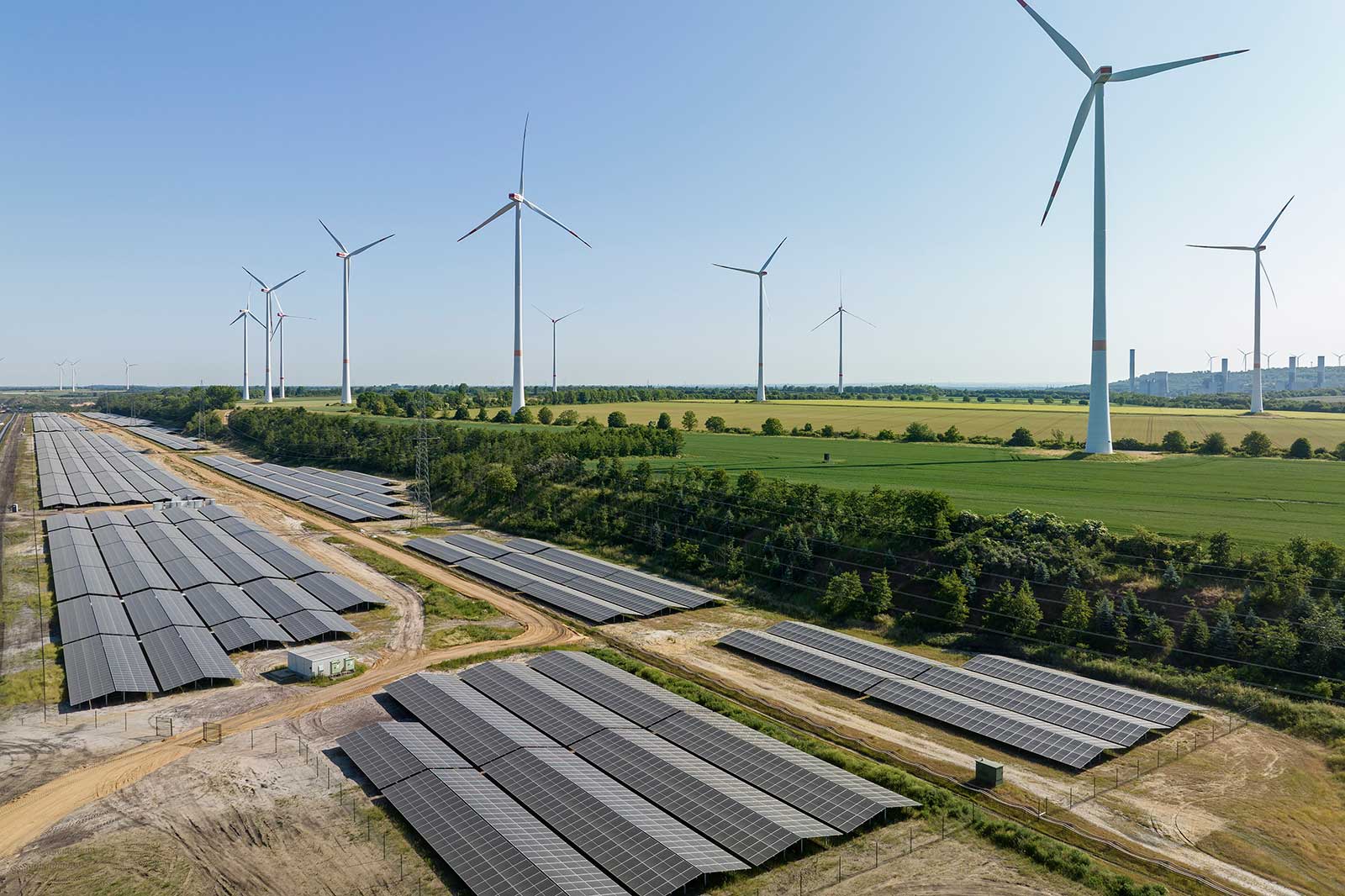RWE commissions 53.1 megawatt wind farm in Italy
17.07.2025

Can solar energy be used even when the sun doesn’t shine? Two photovoltaic plants complete with battery storage facilities now make this a reality at the Garzweiler opencast mine. On a site the size of about 38 football fields, RWE has installed more than 58,000 photovoltaic modules that will generate solar electricity for over 7,250 German households every year. At this location RWE uses “bifacial” modules, in other words, modules that are photosensitive on both sides. The advantage of these is that, in addition to sunlight hitting the panels directly, they can also utilise light reflected by the ground to the rear side of the modules. This makes these modules extremely efficient.
Sascha Solbach, Mayor of the City of Bedburg: “For a clean and reliable electricity supply, we not only need more renewables, we also need battery solutions such as those implemented by RWE at the Garzweiler opencast mine, enabling our citizens to use solar power even after sunset.”
Katja Wünschel, CEO RWE Renewables Europe & Australia: “Solar power from opencast mines is a model for success. Using them in combination with battery systems is ideal. This is an integrated and highly successful plant concept that we are putting into practice at several locations simultaneously. In a short timeframe we have constructed three large-scale solar battery plants on opencast mine sites, and one more is under construction. That represents a further step towards our goal of achieving renewables projects with a capacity of 500 megawatts in the Rhenish lignite mining area by 2030.”
The Garzweiler project has a peak capacity of 19.4 megawatts peak (MWp) and 6.5 MW of storage capacity. It was set up directly below the Königshovener Höhe Wind Farm, which is operated by the German city of Bedburg and RWE. The Jackerath project (12.1 MWp and 4.1 MW battery storage) is located on the western edge of the opencast mine. The battery storage systems are designed for a two-hour charging and supply cycle.
Lars Kulik, CTO Lignite at RWE Power: “The two locations have a combined area of approximately 38 football fields. This shows it is not only our large-scale recultivation areas that offer plenty of space for renewables but also opencast mine areas that are still in operation. We plan to use these to ensure the region continues to be an energy producer into the future.”
At the Inden opencast mine, the “RWE indeland Solar Farm” is a similar facility that has been generating solar electricity since 2022 from more than 26,500 solar modules in combination with a battery storage system. The electricity generated there is enough to supply about 4,000 German households. RWE is also constructing the “RWE Neuland Solar Farm” photovoltaic and battery facility at the Hambach opencast mine, and a further solar plant is being planned there.